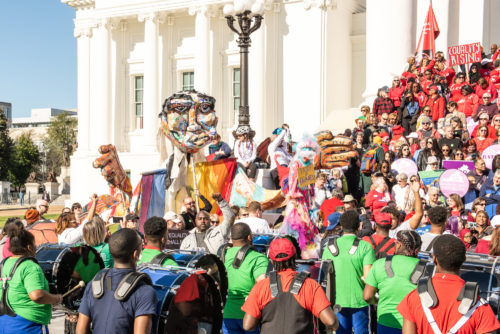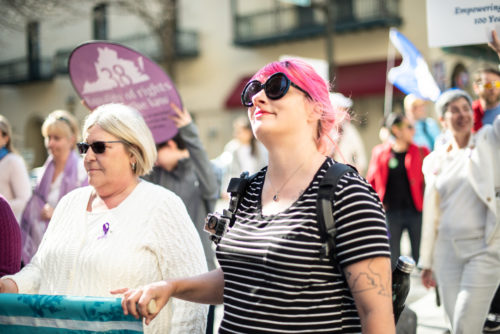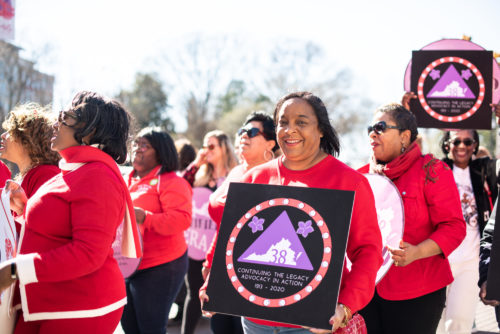“What is the history of the 28th Amendment (Equal Rights)?”
- With a history so rich it fills many college courses (free + online options here and here), here are a few of our favorite / key moments and resource links for further exploration:
- America’s women’s movement was an offshoot of the abolitionist movement. After slavery was abolished, voting rights advocates founded the American Equal Rights Association in 1866 to secure the ballot for all, “irrespective of race, color, or sex.” This goal would not become a political reality for another ~100 years with the passage of the Voting Rights Act (1965). Frances Ellen Watkins Harper gave a moving speech at the group’s first meeting, urging them to confront prejudice based on race and gender (source, “Truth Be Told” digital exhibit at evoke.org).In 1869 the two groups split when the right to vote was extended for men of color (15th Amendment) but excluded women (source, National Park Service).
- During the suffrage movement, one of the notable milestones in achieving the 19th Amendment (Women’s Right to Vote) was a Women’s Suffrage Parade in Washington, DC in 1913. Demands were made by Southern participants to exclude women of color. A few days before the parade the decision to exclude women of color was reversed, leaving little time for communication of the change and travel arrangements. The Founders of Delta Sigma Theta Sorority, Inc. were enrolled at Howard University in Washington, DC and were able to join the parade as their first public action. Unfortunately, they were relegated to the back of the movement both literally and physically (source, The Atlantic). The 19th Amendment was added to the Constitution on August 26, 1920.
- The civil rights movement spurred the resurgence of the Equal Rights Amendment and during this second wave of feminism, Shirley Chisolm became the first woman and woman of color to run for office furthering the push for true gender equality. In 1970 Representative Chisholm gave a speech in support of the ERA on the House floor saying: “The Constitution they wrote was designed to protect the rights of white, male citizens. As there were no Black Founding Fathers, there were no Founding Mothers— a great pity, on both counts. It is not too late to complete the work they left undone. Today, here, we should start to do so.” (source, Equality Now)
- Also in 1970, Betty Friedan organized the Women’s Strike for Equality to mark the 50 year anniversary of the 19th Amendment (source, Jewish Women’s Archive). This call to action is commemorated annually with Women’s Equality Day (August 26th).
- Sadly, the effort to ratify the Equal Rights Amendment stalled out in the late 70s with only 35 of the requisite 38 ratifications (source, Town and Country Magazine).
- Inspired by the 27th Amendment (Congressional raises) added to the Constitution in the 1990s after a 203 year ratification process, lawyers reviewed the deadline on the Equal Rights Amendment. The scholarly review determined the Equal Rights Amendment was legally viable and properly before the states (source, William & Mary Journal of Women and the Law).
- Nevada ratified in 2017 (source, NPR)
- Illinois ratified in 2018 (source, Chicago Tribune)
- Virginia ratified in 2020 (source, Forbes Magazine)
- With the final three ratifications, the constitutional requirement of 38 ratifications is met.
ADDITIONAL FAQs

































